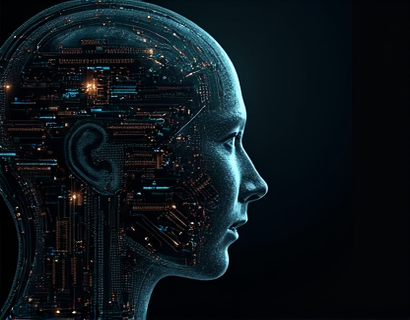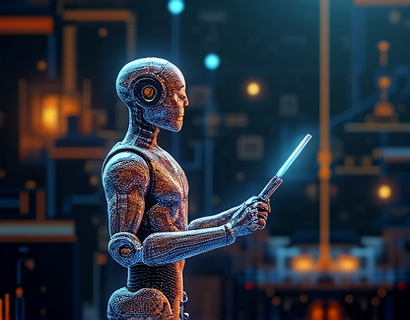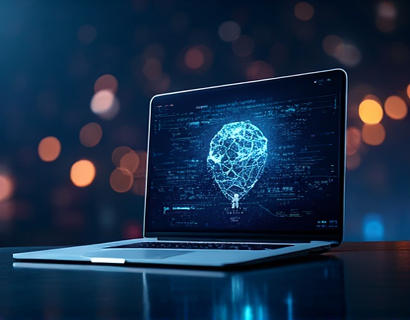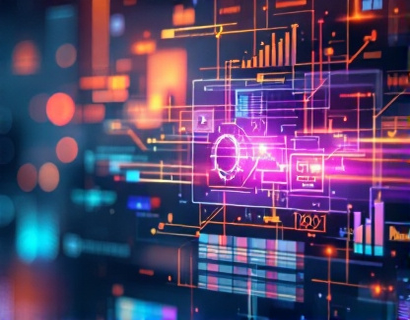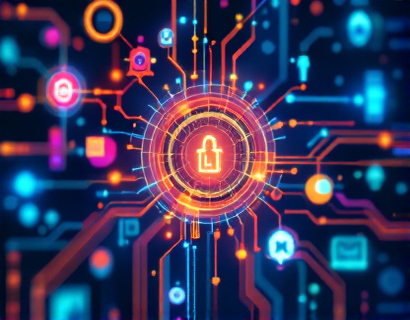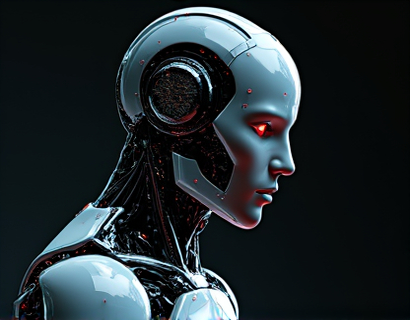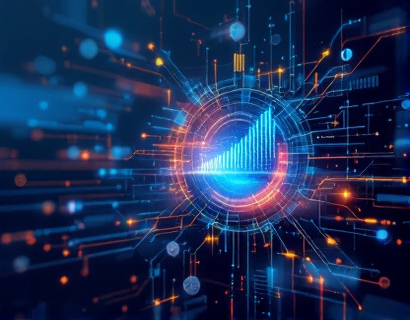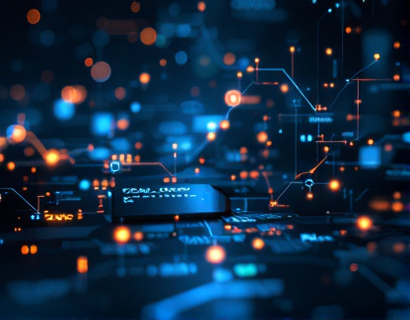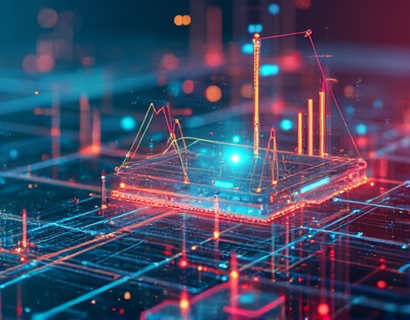Revolutionizing Digital Engagement: The Synergy of Crypto and AI
The intersection of cryptocurrency and artificial intelligence (AI) is ushering in a new era of digital engagement, transforming how users interact with technology and each other. This fusion is not just a technological advancement but a paradigm shift that is redefining the very fabric of the digital ecosystem. As we delve into the latest innovations in crypto and AI, it becomes evident that their combined power is driving enhanced user experiences and fostering unprecedented growth in the tech landscape.
The traditional digital landscape was characterized by centralized systems and static user interactions. However, the advent of blockchain technology and AI has introduced a dynamic and decentralized approach. Blockchain's inherent transparency, security, and decentralization, coupled with AI's ability to process and analyze vast amounts of data, creates a powerful synergy that is revolutionizing app interactions and user engagement.
Enhanced Security and Trust
One of the most significant benefits of integrating crypto and AI is the enhancement of security and trust in digital platforms. Blockchain technology ensures that transactions are immutable and transparent, reducing the risk of fraud and data breaches. AI, on the other hand, can detect and prevent anomalous activities in real-time, further fortifying the security framework. This dual approach not only protects user data but also builds a higher level of trust, encouraging more users to engage with digital services.
For instance, AI-driven security protocols can monitor user behavior patterns and identify potential threats before they materialize. By combining this with blockchain's tamper-proof ledger, platforms can offer a secure environment where users feel confident in sharing sensitive information. This trust is crucial for fostering deeper engagement and loyalty, as users are more likely to interact and transact within a secure and reliable ecosystem.
Personalized User Experiences
AI's strength lies in its ability to analyze vast datasets and derive meaningful insights, which can be leveraged to create highly personalized user experiences. In the context of the digital ecosystem, this means tailoring content, recommendations, and interactions to individual preferences and behaviors. When combined with the decentralized nature of crypto, these personalized experiences can be rewarded and incentivized through cryptocurrency tokens.
For example, a digital content platform can use AI to analyze a user's reading habits and preferences, curating a personalized feed of articles and videos. These interactions can be rewarded with tokens that can be used within the platform or exchanged for real-world value. This not only enhances user engagement but also creates a more interactive and rewarding experience, encouraging users to spend more time on the platform.
Decentralized Applications (DApps)
Decentralized applications, or DApps, are a prime example of how crypto and AI are transforming digital engagement. DApps operate on blockchain networks, leveraging AI to provide smart, adaptive, and user-centric functionalities. These applications are not controlled by a single entity, ensuring greater autonomy and control for users.
AI can enhance DApps by providing intelligent decision-making capabilities, such as predictive analytics and natural language processing. For instance, a decentralized finance (DeFi) platform can use AI to offer personalized investment advice based on a user's financial goals and risk tolerance. This level of personalization and autonomy is a significant departure from traditional centralized applications, offering users a more empowering and engaging experience.
Fractional Ownership and Tokenization
The tokenization of assets through blockchain technology, powered by AI, is democratizing access to high-value assets and creating new opportunities for user engagement. Tokenization allows assets to be divided into smaller, tradable units, making them accessible to a broader audience. AI can optimize the tokenization process by analyzing market trends, predicting asset values, and automating the issuance and trading of tokens.
For example, real estate can be tokenized, allowing multiple users to own fractions of a property. AI can manage the rental process, handle maintenance requests, and even predict property values based on market data. This not only enhances the user experience by providing a seamless and efficient process but also opens up new avenues for investment and engagement in traditionally exclusive markets.
Enhanced Data Analytics and Insights
AI's ability to process and analyze large datasets is invaluable in the digital ecosystem, especially when combined with the transparent and secure data handling of blockchain. This synergy enables platforms to gain deeper insights into user behavior, preferences, and trends, leading to more informed decision-making and targeted interventions.
For instance, a social media platform can use AI to analyze user interactions and sentiment, providing real-time insights into trending topics and user interests. This data can be used to refine content algorithms, improve user engagement, and create more relevant advertising opportunities. The transparency of blockchain ensures that data usage is transparent and consent-based, further enhancing user trust and engagement.
Smart Contracts and Automated Interactions
Smart contracts, self-executing contracts with the terms directly written into code, are another area where crypto and AI converge to enhance digital interactions. AI can optimize the creation and execution of smart contracts by analyzing complex scenarios and predicting outcomes, ensuring that agreements are fair and efficient.
In the context of the digital ecosystem, smart contracts can automate various processes, from content monetization to user rewards. For example, a content creator can set up a smart contract that automatically distributes tokens to users based on their engagement levels, such as likes, shares, and comments. AI can monitor and adjust these parameters in real-time, ensuring that the system remains fair and responsive to user behavior.
Challenges and Considerations
While the integration of crypto and AI offers numerous benefits, it also presents challenges that need to be addressed. One of the primary concerns is the regulatory landscape, as both crypto and AI are still evolving fields with varying levels of regulation across different regions. Ensuring compliance and navigating the legal complexities is crucial for the sustainable growth of these technologies.
Another challenge is the technical complexity involved in integrating blockchain and AI systems. Developers need to possess a deep understanding of both domains to create seamless and efficient solutions. Additionally, there is a need for standardization to ensure interoperability between different platforms and services.
Privacy is also a significant concern, as the use of AI involves processing large amounts of user data. It is essential to implement robust privacy measures and adhere to data protection regulations to maintain user trust. Transparency in data usage and providing users with control over their data are key to addressing these concerns.
Future Prospects
The future of digital engagement is bright, with the continued convergence of crypto and AI promising even more innovative solutions. As technology advances, we can expect to see more sophisticated AI algorithms, enhanced blockchain capabilities, and broader adoption across various industries.
One exciting area is the integration of AI with other emerging technologies, such as the Internet of Things (IoT) and virtual reality (VR). AI can optimize IoT devices for better performance and security, while VR can create immersive experiences powered by AI-driven content. When combined with the decentralized and secure nature of crypto, these technologies can revolutionize how we interact with digital environments.
Moreover, the rise of decentralized autonomous organizations (DAOs) is another frontier where crypto and AI can make a significant impact. DAOs leverage blockchain and AI to create self-governing entities that operate based on predefined rules and algorithms. These organizations can democratize decision-making processes and create more inclusive and transparent communities.
In conclusion, the fusion of cryptocurrency and AI is not just a technological trend but a transformative force that is redefining digital engagement. By enhancing security, personalizing user experiences, enabling fractional ownership, and providing deep insights, this synergy is driving growth and innovation in the tech landscape. As we continue to explore and harness the potential of these technologies, the digital ecosystem will become more interactive, secure, and user-centric, paving the way for a more connected and empowered future.



